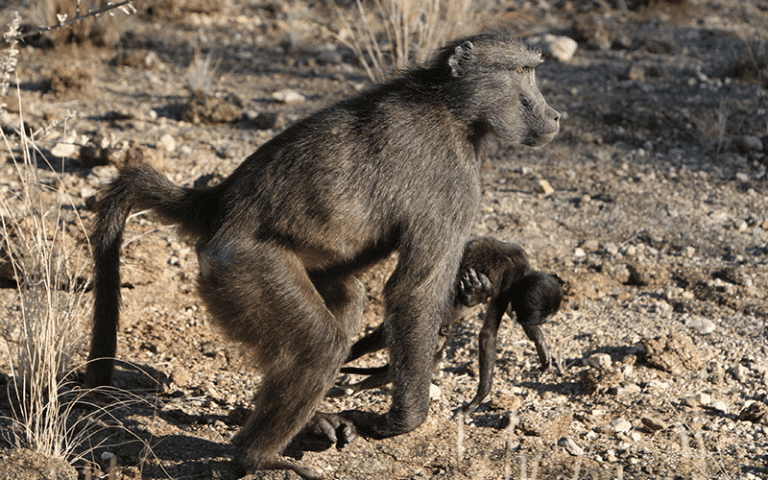
Scientists have documented hundreds of instances in which ape or monkey mothers continue to groom and hold on to the corpses of their infants for days, weeks, and in some exceptional cases, even months after the babies passed away. In a new study, scientists have analyzed more than 500 such documented cases among 50 primate species, finding that the behavior is more widespread than previously believed. The distressing behavior is seen as an expression of grief.
“Our study indicates that primates may be able to learn about death in similar ways to humans: it might take experience to understand that death results in a long-lasting ‘cessation of function’, which is one of the concepts of death that humans have. What we don’t know, and maybe will never know, is whether primates can understand that death is universal, that all animals – including themselves – will die,” Dr. Alecia Carter, a researcher at University College London, said in a statement.
A striking coping behavior
The practice of carrying around dead infants didn’t have a clear explanation until now, considering it is costly and provides no apparent benefit to the parent. However, the widespread nature of the practice across time and many species motivated primatologists at the University College London in the UK to embark on a study.
The team analyzed reports dating from as far back as 1915 to 2020, compiling 509 cases of infant corpse carrying among 50 primate and monkey species, 80% of which engaged in this practice regularly.
Our closest relatives, the great apes — bonobos, eastern and western gorillas, chimpanzees, and orangutans — had the highest frequency of cases, along with Old World Monkeys. Both of these groups carried their dead infants the longest.
For instance, in their study, the researchers describe a case recorded in 2017 involving a female macaque in an Italian wildlife park who carried her dead infant for four weeks, before eventually cannibalizing the mummified corpse. One of the most extreme cases of this activity was observed in 2003, when the corpses of two infant chimpanzees were carried around by their mothers for months.
Although we can never be sure what are the motivations behind this behavior, there are some patterns that point towards a form of stress management. Some of the primate mothers would shriek in alarm when the corpses of their babies were taken away from them, which suggests carrying the corpse is a form of coping strategy to alleviate the great stress caused by infant separation.
When live primate babies are separated from their parents, both the infant and the mother show signs of significant anxiety. A 2011 study showed that rhesus monkey babies do not fully recover from the stress of being separated from their mothers at birth, leaving them prone to a life of anxiety, poor social skills, and depression.
The researchers in the UK found that the younger the infant, the more likely it was for the mother to carry the babies for longer, perhaps because the bond between them was the strongest then.
The age of the mothers was also an important factor. Young mothers were more likely to carry their dead babies. The researchers write that older mothers may be experienced enough to recognize that their infants are gone and may be more psychologically equipped to deal with the broken bond with the baby.
Traumatic deaths, such as infanticides or accidents, were less likely to result in corpse carrying compared to deaths caused by non-traumatic events, such as illness. A death resulting from an illness may not make it immediately clear to the mother that her baby is lifeless.
“We show that mothers that were more strongly bonded to their infant at death carry the corpse for longer, with emotions possibly playing an important role. However, our study also shows that, through experience with death and external cues, primate mothers may gain better awareness of death and therefore ‘decide’ not to carry their dead infant with them, even if they may still experience loss-related emotions,” said co-author Elisa Fernández Fueyo of University College London’s Department of Anthropology.
Clues about the origin of human mortuary practices
The findings have important implications not only for advancing our understanding of how non-human primates grieve, but also how we’ve come to deal with death among our own species. Human social bonds are very similar to those of chimpanzees and bonobos due to our shared evolutionary history. Human mortuary practices and grief may have their origins in these shared social bonds.
The thanatological behaviours that we see in non-human primates today may have been present in early human species as well – and they may have transformed into the different rituals and practices during human evolution,” said Elisa Fernández Fueyo.
“However, we need more data to enable us to further develop our understanding of this, and of how much primate behaviours relating to death may not only be explained by bonds but also by the associated emotions and, thus, resemble human grief.”
The findings were reported in the journal Proceedings of the Royal Society B.






